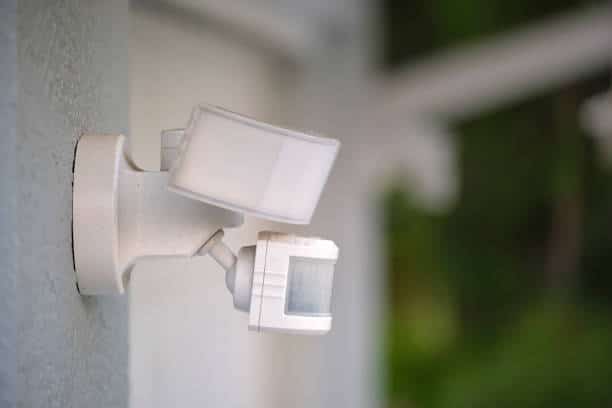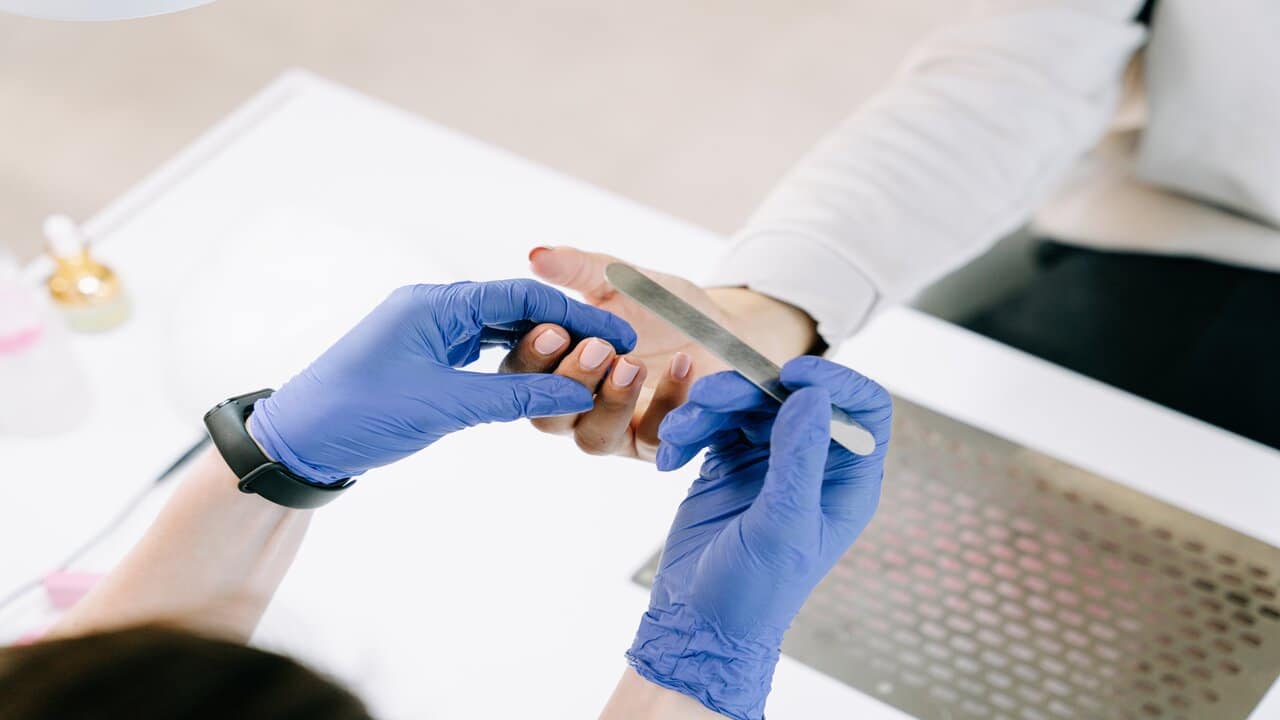Streak-free glass adds a touch of elegance and sophistication to any home. However, achieving that perfect shine can be a challenging task.
Not only do streaks detract from the visual appeal of the glass, but they can also hinder its ability to transmit light and provide clear views.
Fortunately, there are simple yet effective techniques for cleaning glass without leaving streaks. In this article, we have made a comprehensive guide on 5 safety tips for streak-free glass cleaning. Carefully follow the guide.
Table of contents
- What is the Importance of streak-free glass?
- What are the Common challenges in achieving streak-free results?
- What are the Different types of glass surfaces?
- What are the Factors affecting streaks on glass?
- How to Prepare for Streak-Free Cleaning
- Safety Tips for Streak-Free Glass Cleaning
- Techniques for Specific Glass Areas
- How Do I Maintain Streak-Free Results?
- FAQs on Streak-Free Glass Cleaning
- Conclusion
- References
- Recommendations
What is the Importance of streak-free glass?
Glass surfaces, whether windows, mirrors, or tabletops, add a touch of elegance and sophistication to any space. However, achieving a streak-free shine on glass can be a seemingly elusive task.
Streaks not only detract from the visual appeal of the glass but also hinder its ability to transmit light and provide clear views.
Streak-free glass cleaning is an art that requires a combination of the right tools, techniques, and understanding of the science behind glass surfaces.
Mastering this art not only enhances the aesthetics of your home but also ensures that your glass surfaces perform their intended functions effectively.
Read Also: How To Get Gum From Shoes
What are the Common challenges in achieving streak-free results?
Several factors contribute to the formation of streaks on glass surfaces:
- Improper cleaning techniques: Using harsh chemicals, abrasive cloths, or incorrect wiping motions can leave behind streaks.
- Water quality: Hard water, containing dissolved minerals, can leave behind residue and streaks when it dries.
- Residual cleaning solution: Leaving excess cleaning solution on the glass can dry into streaks.
- Environmental factors: Dust, pollen, and other airborne particles can adhere to the glass surface, causing streaks when wiped.
What are the Different types of glass surfaces?
Glass surfaces can be categorized into three main types:
- Float glass: This is the most common type of glass, used in windows, mirrors, and tabletops. It is made by floating molten glass on a bed of molten tin, producing a smooth and flat surface.
- Tempered glass: This type of glass is stronger and more resistant to breakage than float glass. It is made by heating float glass to its softening point and then rapidly cooling it. This process creates internal stresses that make the glass more resistant to impact and temperature changes.
- Coated glass: This type of glass has a thin layer of material applied to its surface to enhance its properties. For example, low-emissivity (low-E) glass has a coating that reduces its ability to transmit heat. Other types of coated glass include anti-reflective glass, which reduces glare, and self-cleaning glass, which has a coating that repels water and dirt.
Read Also: Three-Way Lights – How Three-Way Switches Work
What are the Factors affecting streaks on glass?
The formation of streaks on glass is influenced by several factors:
- Surface texture: Smoother glass surfaces are less prone to streaks, while textured glass can trap moisture and dirt, leading to streaks.
- Cleaning solution: The type and concentration of cleaning solution can affect streak formation. Harsh chemicals or solutions that are too concentrated can leave behind residue that will streak when dry.
- Wiping motion: The direction and consistency of wiping can cause streaks if not done properly. Wiping in straight lines can create streaks while using a circular motion and overlapping each pass will help to prevent them.
- Drying method: Allowing the glass to air dry can leave behind water spots that may appear as streaks. Using a squeegee or microfiber cloth to remove excess water will help to prevent this.
- Water quality: Hard water, containing dissolved minerals, can leave behind residue and streaks when it dries. If you have hard water, you may need to use a distilled water rinse after cleaning your glass surfaces.
- Environmental factors: Dust, pollen, and other airborne particles can adhere to the glass surface, causing streaks when wiped. Regular cleaning will help to remove these contaminants and prevent streaks.
By understanding the different types of glass surfaces and the factors that affect streaks, you can develop a cleaning routine that will leave your glass surfaces sparkling clean and streak-free.
Read Also: How to Make Homemade Dog Repellent
How to Prepare for Streak-Free Cleaning
Sure, here is a detailed guide on preparing for streak-free glass cleaning, including gathering necessary supplies and creating an optimal cleaning solution:
Gathering necessary supplies
To achieve streak-free glass cleaning, you’ll need the following supplies:
- Microfiber cloths: Microfiber cloths are lint-free and highly absorbent, making them ideal for cleaning glass without leaving streaks. They trap dirt and moisture effectively, ensuring a clean and streak-free finish.
- Cleaning solution: You can use a store-bought glass cleaner or prepare your own DIY solution using distilled water and white vinegar. Store-bought cleaners often contain additional ingredients that enhance cleaning power or prevent streaking, while DIY solutions are more economical and environmentally friendly.
- Spray bottle: A spray bottle allows you to evenly distribute the cleaning solution onto the glass surface, ensuring thorough cleaning and minimizing the risk of streaks.
- Rubber squeegee: A rubber squeegee is useful for removing excess water from windows or large glass surfaces, especially after using a cleaning solution. It helps prevent water spots that can appear as streaks when dry.
Creating an optimal cleaning solution
1. DIY vs. store-bought cleaners
Both DIY and store-bought glass cleaners can be effective for streak-free cleaning. The choice between the two depends on your preferences and priorities.
- DIY cleaners: DIY cleaners offer a more economical and environmentally friendly option. They are typically made with simple ingredients like distilled water and white vinegar, which are readily available and less harsh than some store-bought chemicals.
- Store-bought cleaners: Store-bought cleaners often contain additional ingredients that enhance cleaning power or prevent streaking. They may include surfactants, which help loosen dirt and grime, or alcohols, which aid in drying and streak prevention.
2. Proportions for effective solutions
If you choose to make your own DIY cleaning solution, follow these proportions for an effective and streak-free formula:
- Equal parts distilled water and white vinegar: Mix equal parts distilled water and white vinegar in a spray bottle. Distilled water is preferred over tap water to avoid streaking due to mineral residue.
- Adjust for hard water: If you have hard water, you may need to adjust the proportions to account for the mineral content. Add slightly more vinegar to the solution to cut through the minerals and prevent streaking.
- Optional additions: For a more fragrant solution, you can add a few drops of essential oil, such as lemon or lavender. These oils can also provide additional cleaning power and leave a pleasant scent.
Safety Tips for Streak-Free Glass Cleaning
Here are 5 safety tips for streak-free glass cleaning:
Tip 1: Properly Ventilate the Area
When using cleaning solutions, especially those containing ammonia or other harsh chemicals, ensure adequate ventilation to avoid inhaling fumes. Open windows or use a fan to promote airflow.
Tip 2: Use the Right Tools and Techniques
- Microfiber cloths vs. newspaper: Microfiber cloths are superior to paper towels or newspapers for streak-free glass cleaning. Their lint-free and absorbent nature prevents streaks and scratches.
- Circular vs. straight-line motion: Avoid wiping glass in straight lines, as this can create streaks. Use a circular motion, overlapping each pass to ensure even cleaning.
Tip 3: Avoid Harsh Chemicals
Harsh chemicals can damage glass surfaces and leave behind residue that can cause streaks. Opt for milder cleaning solutions or DIY solutions using natural ingredients like vinegar or lemon juice.
Tip 4: Work on Smaller Sections at a Time
Cleaning large glass surfaces in one go can be overwhelming and increase the risk of streaks. Break down the cleaning process into smaller sections, focusing on one area at a time. This allows for more concentrated attention and reduces the chances of streaks forming.
Tip 5: Address Stubborn Streaks with Precision
If stubborn streaks persist, tackle them with precision and care. Use a damp microfiber cloth and gently wipe the streaky area in a circular motion. Avoid applying excessive pressure or using abrasive materials that could scratch the glass.
By following these safety tips, you can protect yourself from potential hazards and maintain streak-free glass surfaces throughout your home.
Read Also: How to Clean Bathtub Jets
Techniques for Specific Glass Areas
Achieving streak-free glass cleaning requires tailored techniques for different types of surfaces. Here’s a comprehensive guide to cleaning specific glass areas:
Windows
1. Exterior window cleaning:
Exterior window cleaning requires additional safety considerations due to the potential for falls. Follow these steps:
- Gather necessary supplies: Cleaning solution, spray bottle, squeegee, microfiber cloths, and ladder (if necessary).
- Prepare the area: Clear the area around the windows, ensuring a safe working space.
- Clean the window frame: Use a damp microfiber cloth to wipe down the window frame, removing dust and dirt.
- Apply cleaning solution: Spray the window surface with the cleaning solution, ensuring even distribution.
- Wipe the window: Using a microfiber cloth, start from the top of the window and work your way down, using a circular or S-shaped motion. Overlap each pass to avoid streaks.
- Remove excess water: Use a squeegee to remove excess water from the window surface, working from top to bottom and overlapping each pass.
- Dry edges: Use a clean microfiber cloth to dry any remaining moisture around the edges of the window.
Interior window cleaning:
Interior window cleaning is less challenging but still requires attention to detail. Follow these steps:
- Gather necessary supplies: Cleaning solution, spray bottle, and microfiber cloths.
- Prepare the area: Protect the area around the windows with towels or drop cloths to prevent spills.
- Apply cleaning solution: Spray the window surface with the cleaning solution, ensuring even distribution.
- Wipe the window: Using a microfiber cloth, start from the top of the window and work your way down, using a circular or S-shaped motion. Overlap each pass to avoid streaks.
- Dry the window: Use a clean microfiber cloth to dry the window surface, ensuring no streaks remain.
Read Also: How to Repair an Oven: Tips and Guidelines
Mirrors
Frameless mirrors:
Frameless mirrors are commonly found in bathrooms and vanities. Follow these steps to clean them:
- Gather necessary supplies: Cleaning solution, spray bottle, microfiber cloths.
- Apply cleaning solution: Spray the mirror surface with the cleaning solution, ensuring even distribution.
- Wipe the mirror: Using a microfiber cloth, start from the top of the mirror and work your way down, using a circular or S-shaped motion. Overlap each pass to avoid streaks.
- Dry the mirror: Use a clean microfiber cloth to dry the mirror surface, ensuring no streaks remain.
Framed mirrors:
Framed mirrors require additional attention to the frame. Follow these steps:
- Gather necessary supplies: Cleaning solution, spray bottle, microfiber cloths, soft-bristled brush (for frame cleaning).
- Clean the frame: Use a soft-bristled brush to gently remove dust and dirt from the mirror frame.
- Apply cleaning solution: Spray the mirror surface with the cleaning solution, ensuring even distribution.
- Wipe the mirror: Using a microfiber cloth, start from the top of the mirror and work your way down, using a circular or S-shaped motion. Overlap each pass to avoid streaks.
- Dry the mirror: Use a clean microfiber cloth to dry the mirror surface, ensuring no streaks remain.
Glass Tabletops and Surfaces
Glass tabletops and surfaces require a delicate approach to avoid scratches. Follow these steps:
- Gather necessary supplies: Cleaning solution, spray bottle, microfiber cloths.
- Apply cleaning solution: Spray the glass surface with the cleaning solution, ensuring even distribution.
- Wipe the surface: Using a microfiber cloth, start from one corner of the surface and work your way across, using a gentle wiping motion. Overlap each pass to avoid streaks.
- Dry the surface: Use a clean microfiber cloth to dry the glass surface, ensuring no streaks remain.
What are the Causes of Streaks?
Streaks on glass surfaces can arise from various factors, including:
- Improper cleaning techniques: Wiping in straight lines, using abrasive materials, or leaving excessive cleaning solutions can contribute to streaks.
- Water quality: Hard water contains dissolved minerals that can leave residue, resulting in streaks after drying.
- Residual cleaning solution: Allowing the cleaning solution to dry on the surface can leave behind streaks.
- Environmental factors: Dust, pollen, and other airborne particles can adhere to the glass and cause streaks when wiped.
To identify the cause of streaks, consider the following:
- Observe the streak pattern: Streaks caused by wiping techniques tend to be parallel or straight, while those caused by water quality or residual cleaning solution may be more random.
- Check the water quality: If you suspect hard water, test the water with a home water testing kit.
- Review your cleaning technique: Assess whether you’re using the right tools and techniques, such as microfiber cloths and circular motions.
Read Also: 10 Best Home Repair Grants For Disabled Persons in 2024
Remedies for Different Streak Types
Streaks caused by improper cleaning techniques:
- Correct your wiping technique: Use a circular motion, overlapping each pass to ensure even cleaning.
- Use microfiber cloths: Avoid using paper towels or abrasive materials that can scratch the glass.
- Remove excess cleaning solution: Use a squeegee or microfiber cloth to remove excess water or cleaning solution.
Caused by hard water:
- Use distilled water: Distilled water lacks the minerals found in hard water, preventing residue formation.
- Wipe in one direction: For windows, wipe in one direction, such as top to bottom, to prevent streaks from forming.
- Dry thoroughly: Use a squeegee or microfiber cloth to remove all excess water before the minerals can leave residue.
Streaks caused by residual cleaning solution:
- Increase ventilation: Open windows or use a fan to promote airflow and help the cleaning solution evaporate.
- Use a diluted solution: Consider diluting the cleaning solution with more water to reduce the risk of streaks.
- Wipe twice: Wipe the glass surface twice, allowing the first pass to remove dirt and the second to remove any remaining residue.
Streaks caused by environmental factors:
- Clean regularly: Regular cleaning helps remove accumulated dust, pollen, and other airborne particles that can cause streaks.
- Use a damp microfiber cloth. A slightly damp microfiber cloth can effectively capture and remove airborne particles without leaving streaks.
- Rinse with distilled water: After cleaning, rinse the glass with distilled water to remove any remaining particles or residue.
How Do I Maintain Streak-Free Results?
To maintain streak-free glass surfaces, establish a regular cleaning schedule and adopt long-term preventive measures.
A. Regular cleaning schedules:
- Windows: Clean windows every 2-4 weeks, or more often if they are exposed to heavy dirt or dust.
- Mirrors: Clean mirrors regularly, especially in areas with high humidity or frequent use.
- Glass tabletops and surfaces: Clean glass tabletops and surfaces as needed, wiping up spills promptly to prevent residue buildup.
B. Long-term preventive measures:
- Protect from water spots: Use a squeegee or microfiber cloth to remove excess water after cleaning, preventing water spots that can appear as streaks.
- Minimize exposure to dirt and dust: Keep windows closed during periods of high pollen or dust, and use air filters to improve indoor air quality.
- Use coasters: Use coasters on glass tabletops to prevent scratches and protect the surface from spills.
Read Also: How to Do Home Electrical Repairs on Your Own: Full Guide
FAQs on Streak-Free Glass Cleaning
The frequency of cleaning depends on the specific glass surface and its exposure to dirt, dust, and moisture. As a general rule of thumb, clean windows every 2-4 weeks, mirrors regularly, and glass tabletops and surfaces as needed.
Yes, vinegar-based solutions can be effective for cleaning glass. White vinegar is a mild acid that can dissolve dirt, grease, and grime without leaving streaks. Mix equal parts distilled white vinegar and water in a spray bottle for a simple yet effective glass cleaner.
If streaks persist, check for any remaining cleaning solution or residue. Use a microfiber cloth dampened with distilled water to gently remove any lingering traces. For stubborn streaks, try a commercial glass cleaner or a solution of rubbing alcohol and water.
While the general cleaning principles are the same for tinted or treated glass, it’s important to use cleaning solutions specifically designed for the type of glass being cleaned. Avoid using harsh chemicals or abrasive materials on tinted or treated glass, as these can damage the surface.
Conclusion
Achieving streak-free glass isn’t just about aesthetics; it’s also about safety. By following these simple yet effective tips, you can protect yourself from potential hazards while maintaining sparkling clean glass surfaces throughout your home. Remember to always prioritize safety when using cleaning solutions, especially those containing harsh chemicals. Proper ventilation, appropriate tools and techniques, and addressing spills promptly are crucial for a safe and streak-free glass cleaning experience. Enjoy the clear and streak-free radiance of your glass surfaces, knowing that you’ve taken the necessary precautions for a safe and sparkling clean home.





